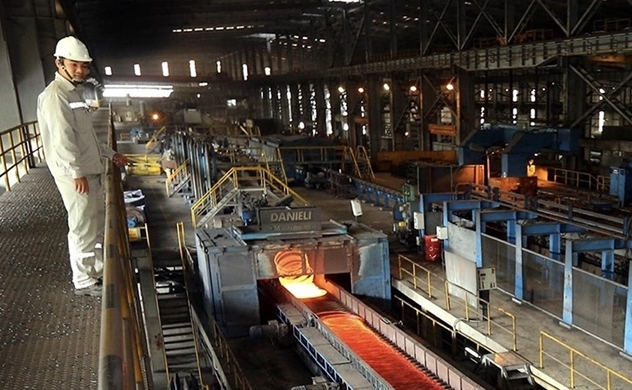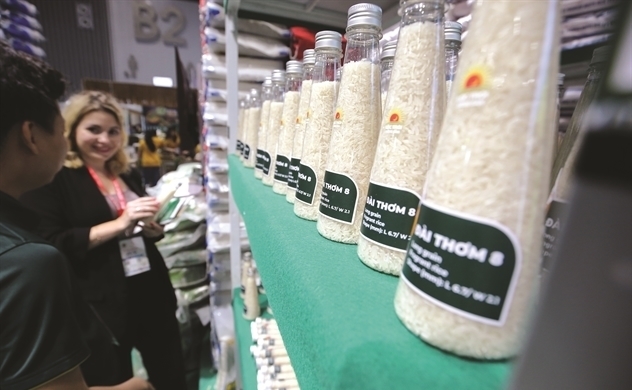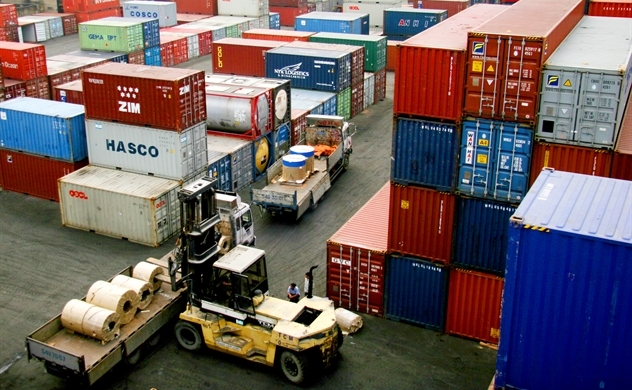Regaining growth momentum for the steel industry

Steel production line at Hoa Phat Steel Joint Stock Company. Photo by Danh Lam.
However, the Government, together with ministries, sectors and localities, are drastically accelerating the disbursement of public investment capital and having several solutions to remove difficulties and promote the real estate market, which is inherently considered as a fulcrum to help Vietnam steel industry regain its growth momentum, in the second half of 2023.
In addition, the current downward trend of bank interest rates also gradually creates favourable conditions for construction material companies in particular and the construction industry in general, to become busier.
Pressure in consumption
Since the beginning of 2023, the domestic construction steel price has increased about five times and then turned to drop 12 times. The latest price adjustment was on June 21, having created a new price level for the domestic steel market.
Accordingly, the steel price of VAS Group dropped sharply when the coil one, type CB240 down 510.000 VND, from 14.36 million VND/ton to 13.85 million VND/ton; rebar D10 CB300 down 250.000 VND, currently priced at 14.01 million VND/ton; Viet Duc steel brand, CB240 coil product, is currently only priced at 13.84 million VND/ton; D10 CB300 rebar is priced at 14.34 million VND/ton.
In some traditional steel export markets such as the US and Europe, which are facing economic difficulties, along with political instabilities in the world, steel exports also only reached 3,154 million tons, a modest increase of 2.6% over the same period.
Although prices fell deeply, domestic consumption and exports slowed down, causing inventories of enterprises to increase highly, and many steel factories had to reduce production. At the same time, the credit tightening pressure of the banks, as well as the real estate market continued to face difficulties for a long time, the cautious sentiment of customers in the global economic recession forecasts also put pressure on real estate businesses in general and construction material companies in particular, including the steel industry.
Since the beginning of this year, the steel dealers have been encountering a generally bleak situation and consumption is not very positive. Many retail contractors take a small amount of goods, just enough for temporary use in a short period, with the hope that the price will continue to decrease further. This puts steel manufacturers in a pincer movement, they have to not only solve the problem of saving input costs to lower product costs, and increase competitiveness, but also improve output consumption.
The financial report of Hoa Phat Group shows that, in the first quarter of 2023, Hoa Phat gained revenue of 26.865 billion VND, down 39%; net profit reached 383 billion VND, down 95% compared to the same period with inventory accounting for 19% of total assets. Similarly, according to the financial report of the first quarter of 2023 of Thai Nguyen Iron and Steel Joint Stock Company (Tisco), the unit's net revenue was only 2.445 billion VND, down 35% compared to the same period.
Deducting expenses, the company's gross profit fell 60% to only 56 billion VND; the gross profit margin also decreased from 3.7% to 2.3%. Despite a sharp reduction in enterprise expenses, the financial one still increased by 50%, to 42 billion VND. This made operating profit negative 19 billion VND, while it was positive 42 billion VND in the same period. Tisco's inventory also increased 21% compared to the beginning of the year, at 2.132 billion VND, accounting for more than 73% of Tisco's short-term assets.
Creating more momentum for development
The main cause of the decline in the steel industry in recent years is the low domestic demand for steel products, which is strongly influenced by the "freezing" real estate market. Along with that, the purchasing power of the civil engineering market is also weak, given the background that the slow economic growth is becoming a barrier to the growth of the steel industry in the first six months of the year. Besides, the downward movement of input material prices is also one of the factors that force manufacturers to reduce the selling price of construction steel, causing profits to decrease.
According to the representative of VSA, with the current domestic steel market, to increase consumption and bring enterprises back to the “race track”, the road ahead is still quite arduous and there is still much work to be done. In particular, it is necessary to quickly remove barriers from the real estate market because this is the field that accounts for about 60-65% of the consumption demand, of the entire steel industry.
It is forecasted that steel consumption in the last months of the year will grow strongly, thanks to the disbursement of public investment capital and policies promoting social housing, especially large projects such as Long Thanh airport or traffic infrastructure projects. This will be the growth engine for enterprises. However, stakeholders should continue to prioritise lowering interest rates and lending at preferential interest rates to manufacturing enterprises; continuously update information, timely warn, and advise steel enterprises on dealing with trade barriers from other countries; simultaneously strengthen the market supervision, timely detect and prevent speculation and commercial fraud, in the steel market.
According to experts' assessment, steel demand and steel prices can increase again in the coming August and September, when public investment is boosted and has spreading effects on manufacturing industries, but the momentum increase may be modest.
Therefore, steel enterprises need to continue to follow up the market, forecast supply and demand to seize opportunities, reduce costs, lower product prices, and improve production and business efficiency.
Simultaneously, the attention of the Government, ministries and branches in releasing much-needed support policies is very essential, which helps create a driving force for socio-economic growth, thereby assisting the construction material companies in production, including the steel industry, solving the problem of consumption demand and regaining development momentum, given the background of many challenges.
Source: NDO

 TIẾNG VIỆT
TIẾNG VIỆT 

















